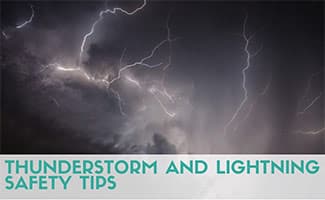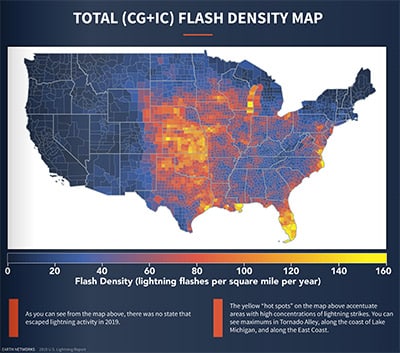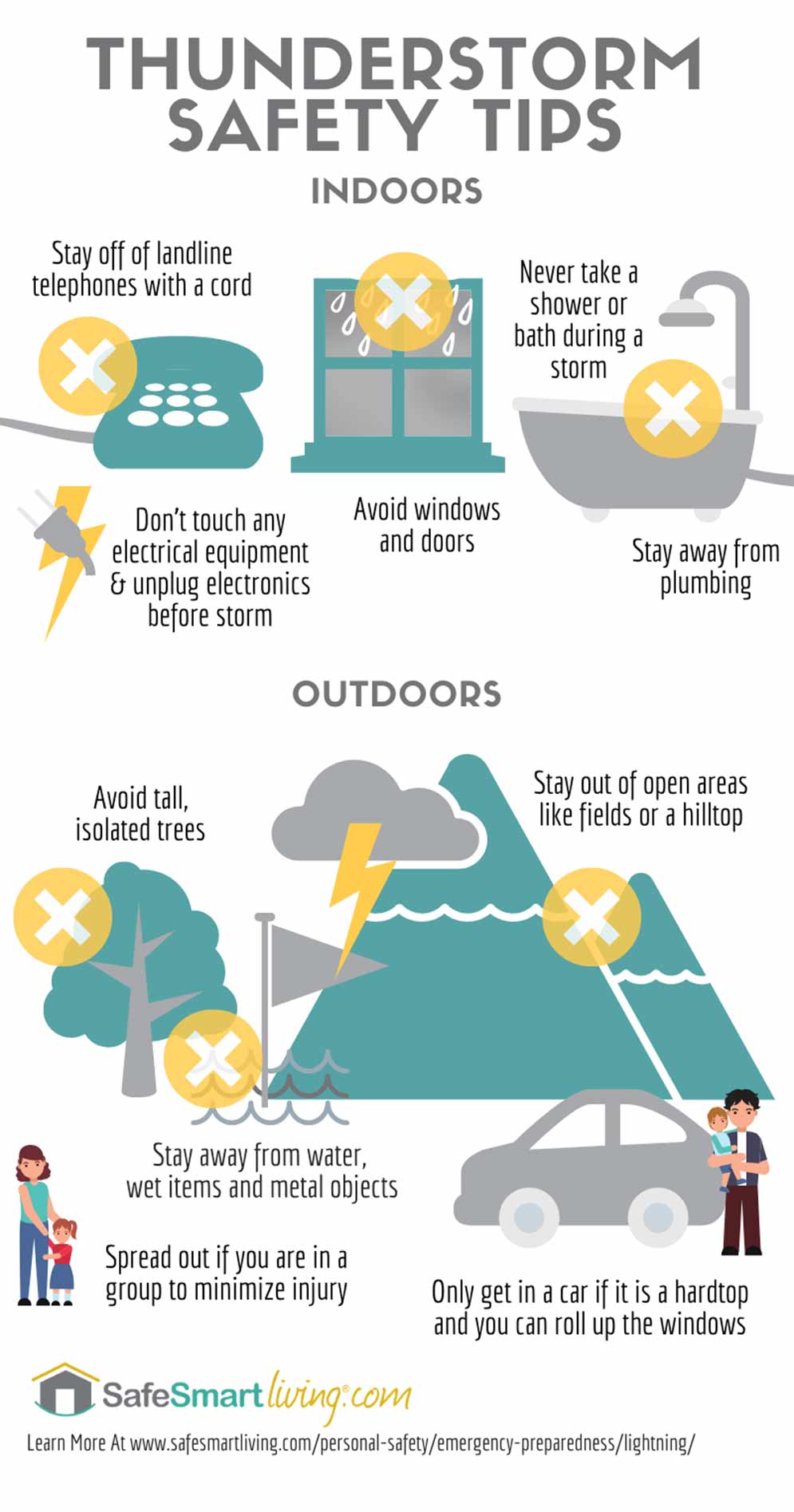Thunderstorm And Lightning Safety Tips: Top 5 Ways To Prepare
When you purchase through links on our site, we may earn a commission. Here’s how it works.

According to the National Oceanic and Atmospheric Administration (NOAA), lightning strikes kill about 50 Americans each year and injure hundreds more. Thunderstorms and lightning can be a threat no matter where you live or what plans you’ve made. It’s crucial to understand how to stay safe during thunderstorms and lightning and also what you need to do to be prepared.
2022 Lightning Stats

There were 446,726,668 lightning strikes in the U.S. in 2021, nearly four times as many as two years ago (112,310,896 in 2019), including cloud and ground flashes, according to a 2021 lightning report by Earth Networks.
Which States Get The Most Lightning?
Acccording to the Earth Network 2021 report, the top 5 states that experienced the most strikes were:
- Texas
- Florida
- Kansas
- Oklahoma
- Illinois
Every state in the U.S. experienced lightning in 2021, however, the three biggest “hot spots” were in Tornado Alley and along the Gulf and East coasts. Texas likely tops the list mainly due to its vast size. Florida has the top five counties with the most lightning strikes.
Thunderstorm & Lightning Facts
Thunderstorms are extremely dangerous, always include lightning, often have powerful winds, and can produce hail, flash flooding, and tornadoes. They’re common during spring and summer but occur most frequently in the U.S. during July and August.
Lightning is very powerful, and a single bolt is five times hotter than the sun’s surface. It can strike as far as ten miles away from the nearest rainfall.
Lightning is the leading cause of death and injury when it comes to weather. You can survive a lightning strike but will likely see the effects of it in your body for the rest of your life. Long-term effects can include headaches, memory loss, nerve damage, hearing and vision impairment, chronic pain, respiratory issues, seizures, dizziness and even depression.
You are not safe if you’re outdoors when thunderstorms and lightning are nearby. You must seek shelter immediately.
5 Ways To Prepare

You need to know how to prepare for thunderstorms and lightning so you can stay safe. Keep these five things in mind at all times.
- Recognize the risk for your area: Some places have a higher risk of storms, but they can occur anywhere.
- Stay aware of weather conditions: Always monitor local weather conditions with a weather radio, television or smartphone app.
- Know the signs of approaching storms: Be on the lookout for dark towering clouds, the rumbling sound of thunder in the distance and flashing lightning.
- Always have a plan for shelter: Whenever you are outdoors, be aware of nearby shelter options in case you need them.
- Keep the 30/30 rule in mind: If there are less than 30 seconds between a lightning flash and the sound of thunder, lightning is a threat. Another good rule of thumb — wait 30 minutes after the last rumble of thunder before you leave your shelter.
Indoor Safety – 5 Ways To Prepare
Being indoors is the best place to be when a storm occurs. However, you still need to know what to do during a thunderstorm in a house or building. Here are 5 key points for safety.
- Stay off of landline telephones with a cord
- Don’t touch any electrical equipment
- Stay away from plumbing
- Never take a shower or bath during a storm
- Avoid windows and doors
Outdoor Safety – Top 6 Tips

If you’re stuck outside during a thunderstorm, you’re not safe. However, there are things you can do to be as prepared and protected as possible. Follow these tips to help keep you safe.
- Stay out of open areas like fields or a hilltop
- Avoid tall, isolated trees
- Spread out if you are in a group to minimize injury
- Stay away from water, wet items, and metal objects
- Avoid partial shelters
- Only get in a car if it is a hardtop and you can roll up the windows
Remember, if you have anywhere you can go indoors, that’s where you should go.
5 Ways To Protect Your Home
Your home is also at risk when thunderstorms and lightning are a threat, but here are five measures you can take to protect your home.
 Keep trees trimmed and cut down the trees that are at risk of damaging your home. Strong winds and lightning can knock trees over.
Keep trees trimmed and cut down the trees that are at risk of damaging your home. Strong winds and lightning can knock trees over.- If you know a thunderstorm is coming, unplug your electronics and appliances to prevent electrical damage.
- Add surge protectors, lightning rods, and lightning protection systems (several lightning rods connected to grounding wires 20 feet underground and are professionally installed) to your home. These add an extra layer of protection during a storm.
- You should also check on your homeowners, and renters insurance, so you know what types of storm damage is covered. We also recommend you educate yourself on when and how your homeowner’s insurance covers water damage.
- If you know a thunderstorm with high winds is approaching, secure loose outdoor items, such as patio chairs or pots, so they don’t become flying debris.
Thunderstorm Safety Tips Infographic

How Do Thunderstorms Form?
This 3-minute video from National Geographic explains how thunderstorms form and what causes lightning and thunder to occur.
Get Prepared For Hurricanes And Tornadoes
In addition to thunderstorms, there are lots of other weather events that can harm you, your family and your home. Be sure to check out our tips on winter safety, hurricane preparedness and tornado safety to make sure you’re ready for all the inclement weather and natural disasters that may come your way.



